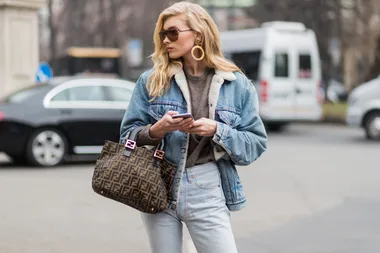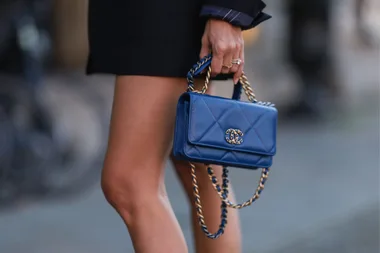Open your wardrobe and take a quick inventory of your clothes. If you’re anything like the average Australian woman, chances are you’re only wearing one third of them.
Even though most of our clothes hang untouched in the closet—taking up valuable sartorial real estate—Australians buy an average of 56 new garments a year. This makes us the highest purchasers of clothing globally, according to the Australian Fashion Council. Yikes!
“Around 200,000 tonnes of clothing, which are mostly made from non-sustainable, non-durable materials, goes to landfill each year,” the report says.
So, how can we declutter our wardrobes without damaging the planet? It all comes down to quality over quantity and how you choose to rehome preloved pieces.
How To Reuse And Donate Preloved Clothes
Whether you’re giving away a one-time-wear wedding guest dress or denim jeans you’ve outgrown, there’s something so gratifying about rehoming your clothes and seeing them be brought to life again by someone else.
“If we could lengthen the wear of a garment, we could significantly reduce the environmental impact,” designer fashion rental marketplace The Volte writes.
“By hiring out your clothes, you are reducing waste by not sending the item to landfill. Other people get use out of it. Plus you are making money. It’s a win-win for the consumer and the environment.”

Before you sell your secondhand clothes, ensure each piece is washed, in good condition and sorted into ‘rent’, ‘donate’ and ‘sell’ piles. A good rule of thumb is to consider whether you’d gift the piece to a friend. If not, then you can cut the fabric into strips to use as cleaning cloths.
Still not sure how to give your clothes a second life? Here are a few suggestions:
- Sell through online marketplaces like Facebook and Depop
- Host a stall at your local pre-loved fashion markets
- Donate responsibly to op shops such as Vinnies, Good Sammys and Salvos
- Organise a clothes swap with friends
- Purchase a textile collection from organisations such as Upparel, which reuse, recycle and repurpose clothing
How To Shop Sustainably For Preloved Clothes
Now you’ve taken an inventory of your wardrobe, you might have uncovered some hidden gems and rediscovered old favourites to restyle. After all, the most sustainable clothing is what you already own! If there are still some gaps in your wardrobe, consider secondhand shopping.
As any secondhand shopper will attest, the thrill of a bespoke find never gets old. Whether it’s discovering a designer item at an affordable price, the perfect pair of shoes in your size or a unique statement piece, incorporating preloved clothes into your existing wardrobe is a great way to experiment with your personal style.

So, what should you look for when shopping secondhand? “Firstly, look for natural fibres like cotton, wool, silk and linen, as these tend to be more durable and comfortable,” says Nathan Yun, CEO of sustainable clothing brand Paire.
“Opt for clothes that are easy to care for and can be washed less frequently, such as wool products. This saves water and extends the life of the clothes. This longevity is not only cost-effective but also lessens the environmental impact.”
Aside from quality and durability, consider choosing timeless designs to build a capsule wardrobe. “Timeless colours and styles, such as neutral shades like black, white, navy and beige, remain fashionable for longer and can be easily mixed and matched,” Yun suggests.

Shopping for long-lasting pieces reduces overconsumption and the demand for fast fashion. As Yun says: “Prioritising quality over quantity means opting for fewer, higher-quality items rather than many cheaper pieces.”
Embrace a wardrobe that’s equal parts stylish and sustainable. For more inspiration and tips on how to reduce your waste, click here.
 Getty
Getty


